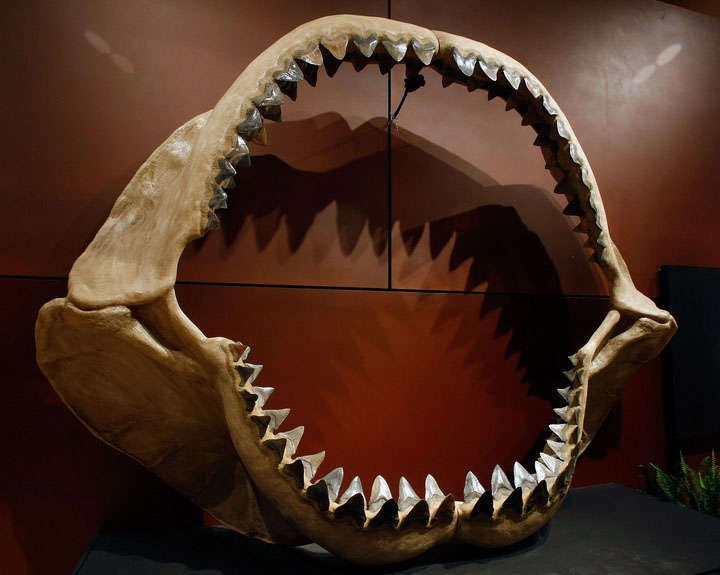Create a free profile to get unlimited access to exclusive videos, sweepstakes, and more!
The Megalodon Shark May Have Been Even Longer (and Thinner) Than We Thought
It would still eat you either way, no problem.
The extinct mega-toothed shark Otodus megalodon lived from 23 million to 3.6 million years ago. We know that because we’ve found their massive teeth, six inches or longer apiece, littered across the seafloor and on beaches all over the world. Teeth make up the majority of the megalodon fossil record, alongside a handful of vertebrae roughly the size of dinner plates.
RELATED: Megalodons Were So Fearsome Because They Were Warm-Blooded
Despite the incomplete fossil evidence, the popular image of megalodons as essentially massive white sharks is well-known. Now, an international team of paleontologists and neontologists (dealing with the biology of living animals) published a study in the journal Palaeontologica Electronica demonstrating that megs may have been longer and thinner than their popular image suggests.
Was Megalodon Short and Stocky or Long and Slender?
Like other sharks, the bodies of megalodon were cartilaginous, almost entirely soft tissue, and that doesn’t preserve very well. A dead meg would make an incredible feast, not to mention a dramatic turning of the tides, for prehistoric oceanic scavengers. Which means that complete specimens are incredibly hard to find, if they exist at all. So far, no complete megalodon specimen has ever been found.
As a result, there is some debate about the size and shape of ancient sharks. Scientists have to make comparisons with closely related living animals, based on the teeth and few bones we have, to infer what they might have looked like during life. The most popular imaginings of megalodons rely on comparisons with the star of Jaws, Carcharodon carcharias, the great white.
RELATED: Megalodon Could Have Eaten a Killer Whale Whole
Researchers take fossil megalodon teeth and compare them with extant lamniform sharks, otherwise known as mackerel sharks, which include threshers, basking sharks, and great whites, among others. The teeth give us a good idea of the size of megalodon’s jaw, and scientists have been able to pull other knowledge from the teeth, like the fact that they were at least a little bit warm-blooded, like living great whites. Taken together, the common image of megalodon is essentially a great white, but greater.
The new study suggests that isn’t the whole picture. Focusing more closely on the vertebrae than the teeth, researchers crafted a model of megalodon that is significantly larger and slimmer than a comparable white shark. However, not all shark experts are onboard with a longer, more slender mega-shark.
RELATED: Great whites might have pushed megalodons toward extinction
The authors of a 2022 study which was based on the same vertebrae came to a more conventional model of megalodon anatomy. In response to the new study, they noted that sharks have remained geometrically similar for hundreds of millions of years, according to a comment given to Smithsonian Magazine’s Riley Black. They aren’t convinced that megalodon was dramatically longer, proportional to its peers.
Understanding the morphology of megalodon could go a long way toward understanding the ecology of the ancient oceans. Like their smaller descendants, megalodons were apex predators of the prehistoric seas, and the way they moved and hunted would have had a trickle down effect throughout the ecosystem. Unless we find a more complete specimen lurking somewhere in the fossil record, we may never fully know what megalodon truly looked like.
We do have a complete record of Jaws, however, available now from Universal Pictures.
































